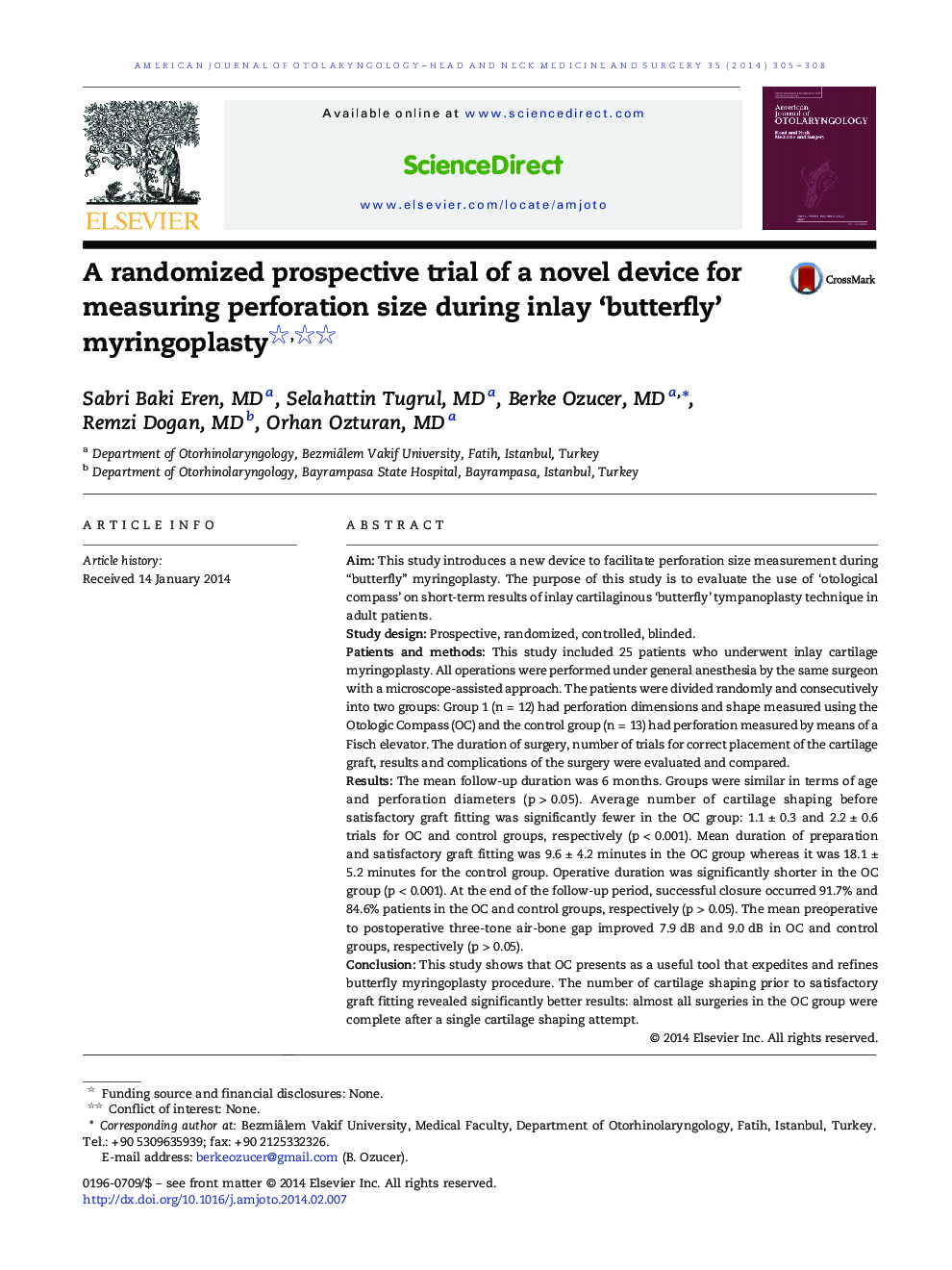| Article ID | Journal | Published Year | Pages | File Type |
|---|---|---|---|---|
| 4103232 | American Journal of Otolaryngology | 2014 | 4 Pages |
AimThis study introduces a new device to facilitate perforation size measurement during “butterfly” myringoplasty. The purpose of this study is to evaluate the use of ‘otological compass’ on short-term results of inlay cartilaginous ‘butterfly’ tympanoplasty technique in adult patients.Study designProspective, randomized, controlled, blinded.Patients and methodsThis study included 25 patients who underwent inlay cartilage myringoplasty. All operations were performed under general anesthesia by the same surgeon with a microscope-assisted approach. The patients were divided randomly and consecutively into two groups: Group 1 (n = 12) had perforation dimensions and shape measured using the Otologic Compass (OC) and the control group (n = 13) had perforation measured by means of a Fisch elevator. The duration of surgery, number of trials for correct placement of the cartilage graft, results and complications of the surgery were evaluated and compared.ResultsThe mean follow-up duration was 6 months. Groups were similar in terms of age and perforation diameters (p > 0.05). Average number of cartilage shaping before satisfactory graft fitting was significantly fewer in the OC group: 1.1 ± 0.3 and 2.2 ± 0.6 trials for OC and control groups, respectively (p < 0.001). Mean duration of preparation and satisfactory graft fitting was 9.6 ± 4.2 minutes in the OC group whereas it was 18.1 ± 5.2 minutes for the control group. Operative duration was significantly shorter in the OC group (p < 0.001). At the end of the follow-up period, successful closure occurred 91.7% and 84.6% patients in the OC and control groups, respectively (p > 0.05). The mean preoperative to postoperative three-tone air-bone gap improved 7.9 dB and 9.0 dB in OC and control groups, respectively (p > 0.05).ConclusionThis study shows that OC presents as a useful tool that expedites and refines butterfly myringoplasty procedure. The number of cartilage shaping prior to satisfactory graft fitting revealed significantly better results: almost all surgeries in the OC group were complete after a single cartilage shaping attempt.
